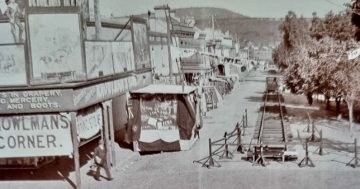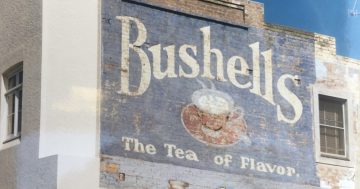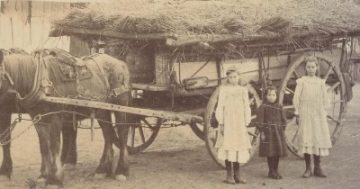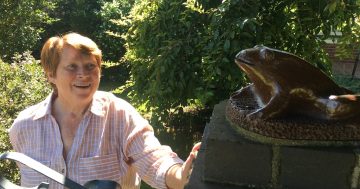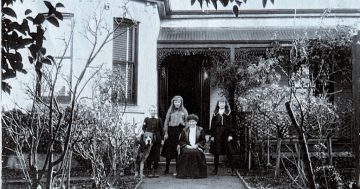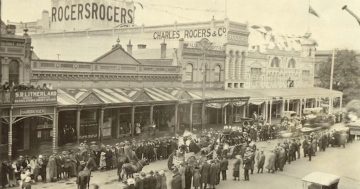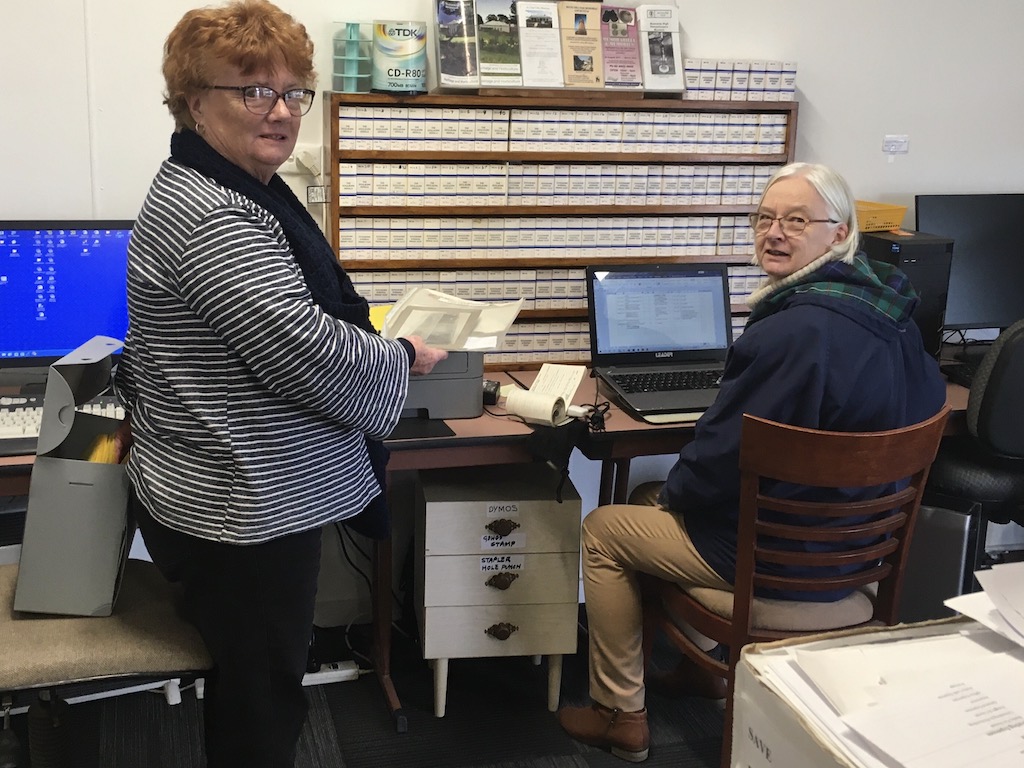
Volunteers Annette Murphy and Helen Dawson work on a library of film records of the Goulburn Herald from 1848, and the Goulburn Evening Penny Post. Photo: John Thistleton.
A deluge of newspapers and photographic negatives recording decades of daily events in Goulburn has swamped local historians.
They’re calling for more volunteers to help catalogue records of the most memorable events in Goulburn’s recent history.
Australian Community Media last year sold and vacated the Goulburn Post’s two-storey, art deco building in the main street, from where successive owners published the paper since 1870, moving the staff to Clinton Street.
Following a change of address, the large collection of bound Goulburn Post newspapers and thousands of black-and-white photo negatives have been handed over to History Goulburn Research Centre.
The images and stories capture every significant news event from the 1960s to the 1990s. It includes profiles of community leaders, captains of industry and commerce and social movers that former Goulburn Post editor of more than 40 years Ray Leeson squirrelled away from the 1950s to the early 1980s in a separate collection.
Many of the negatives were captured by long-serving Goulburn Post photographer Leon Oberg. They include passenger train derailments on the main southern line and explosive aftermaths of arson attacks in Auburn Street.
Leon also has vivid memories of working among Lilac Time Festival crowds swarming over Belmore Park as television personalities Leonard Teale, George Mallaby and Penny Cook made guest appearances.
The negatives also show golfers Bruce Devlin and Brett Ogle, rugby’s Simon Poidevin, rugby league’s Craig Fitzgibbon and cricketer Trevor Bayliss.
“It’s silly to let [the negatives] go,” Leon said. “They are a goldmine for any decent newspaper and can be drawn on for flashbacks, business features.”
The papers, plus the Tallaganda Times (Braidwood) and Yass Tribune, and negatives are now in storage.
“It is a stunning, but massive, collection and it needs a team of volunteers to sort through it,” History Goulburn’s Jennifer Lamb said.
“I’m all for getting everything digitised and getting rid of all the papers because that’s one of our biggest problems, particularly in the History Goulburn lot. But I think hard copies of your local newspaper will always be valuable.”
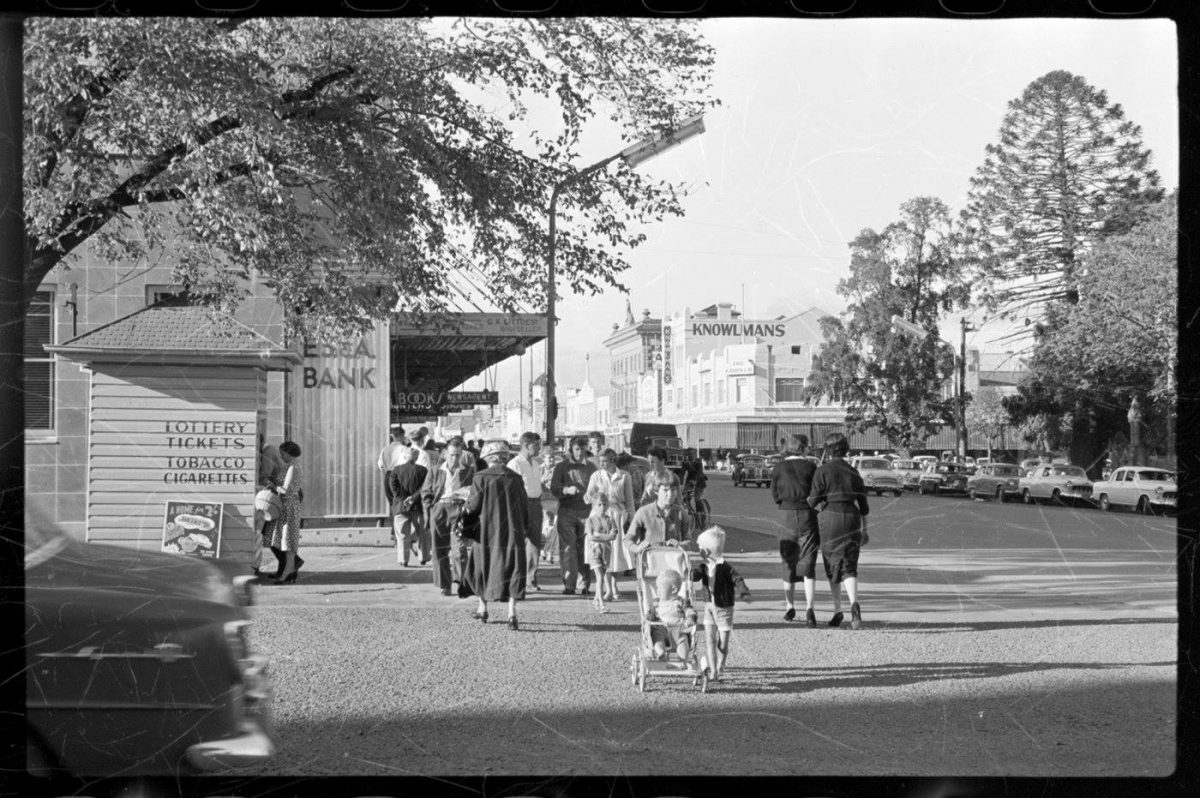 The corner of Montague Street and Auburn Street, Goulburn, in the 1950s. Photo: History Goulburn.
The corner of Montague Street and Auburn Street, Goulburn, in the 1950s. Photo: History Goulburn.
Jennifer is still awaiting clarification on who owns copyright of the photographs.
“It means we could never have the images for sale,” she said. “The photos are in negatives, and someone is scanning them and turning them into digital positives which is working really well. There are masses of them.
“There are so many images on compact discs. They need to come off those CDs because they won’t last forever.
“As the Goulburn historical group, we feel it’s significant to keep one hard copy of each local newspaper [edition], even though it is a bit of a nightmare. Definitely we would hope Trove Library would be digitising them.”
History Goulburn’s main body of records is held in a temporary research centre. Its home museum – the 1840s St Clair Villa – is undergoing major conservation work, so volunteers are running the research centre from a former shop at 324 Sloane Street.
Jennifer said it was an excellent venue, generously provided by Helen Hadlow.
History Goulburn’s overall collection has been gathered over 70 years. Included are paper files recording people and families who have lived in the district.
Other files record district buildings and locations plus Goulburn’s cultural, sporting, commercial and industrial activities. There are also records of burials, pioneer registers, plus countless electronic and paper images.
One publication even names people and localities in the Goulburn Plains district in the 1828 census – a year before the town of Goulburn was even gazetted.
For further information email: historygoulburn2580@gmail.com or Facebook History Goulburn.












